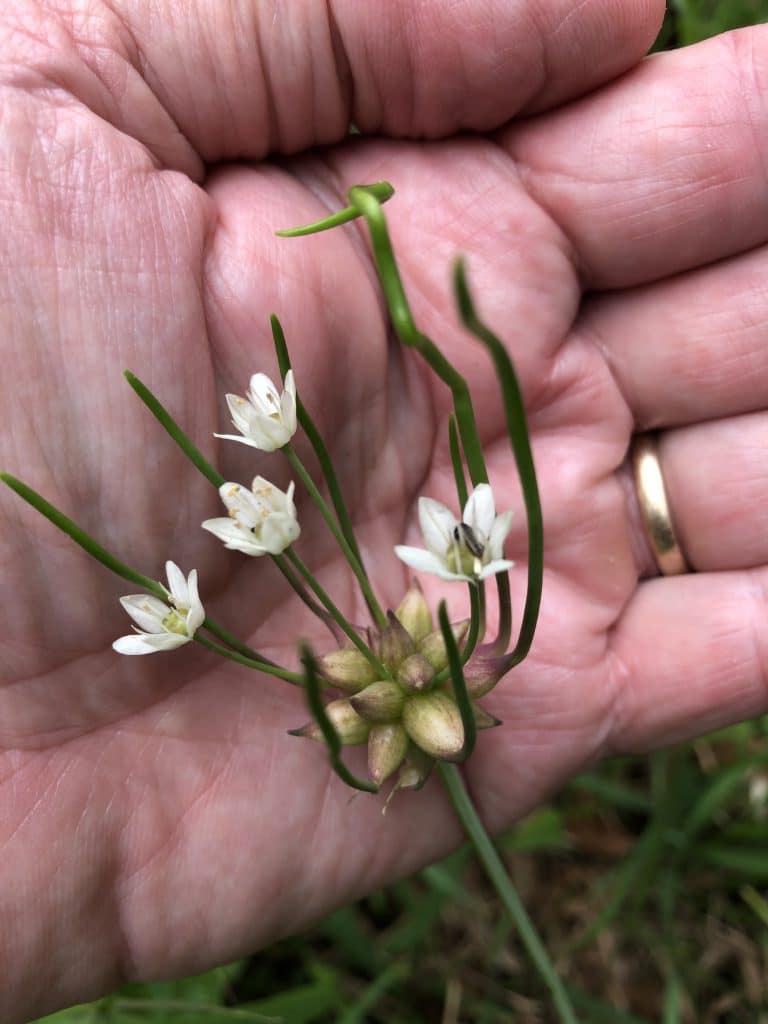Yes, many of the plants in your yard are edible and quite tasty. We walk past so many nutritious and tasty greens in our landscape every day, bringing home the fiber in our diets from the grocery store instead. And yet, our parents and grandparents often foraged in the yard or local woodlands.
Spring is an especially great time to find and eat some of my favorites. The tender shoots of Greenbrier and flower heads of Wild Onion are hard to miss this time of year. For those grass cutters among you, you have already smelled the strong odor of onions that you just mowed down.
You certainly have to be cautious about knowing what you are eating, but these two common greens are safe and plentiful this time of year. And while you are out looking, you may also find some other tasty treats as well – dewberries!
Greenbriar shoots are everywhere at the moment and are nice and tender. The bright green shoots or canes grow rapidly from buried tubers. Also known as cat briers or saw briers there are as many as six species locally. The best are those that produce the larger diameter shoots, although the smaller ones are also edible. The shoots can be eaten raw, sautéed in butter or steamed. Combine these with wild onions and potatoes and you have the makings of a tasty green chowder.

Wild onions, also called meadow garlic or wild garlic, are also easy to find. The cluster of small white to lavender flowers sit amongst a number of bulblets – that resemble garlic cloves. Bulbs are buried a few inches in the ground, and although small, they have a powerful odor that makes me cry every time! The leaves and bulblets are also tasty.
Do be cautious, however, because there is a similar-looking plant that is toxic. Crow Poison has white flowers and a bulb but has no bulblets and no odor. The key here is that if it smells like an onion, it is an onion.
So, go ahead and eat some greens from your yard! It may become a habit.
Hope to see you in our great outdoors!